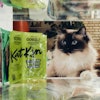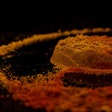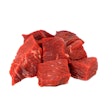While events that conspired to sweep petfood into the Food Safety Modernization Act of 2011 were not exclusively pathogen related, the net result has been an almost singular focus on eliminating Salmonella in petfood. Before 2007, the only area in the news that seemed to be affected by Salmonella was poultry products (i.e., chicken and eggs). Now there is a near-constant stream of recalls from Salmonella in petfood and treats. Clearly, Salmonella is the one ingredient no one wants in their pet's food, treat, or chew toy. But can it truly be eliminated?
Find more







